Emily Nachison: A Lustrous Glow with “Dust to Dust”

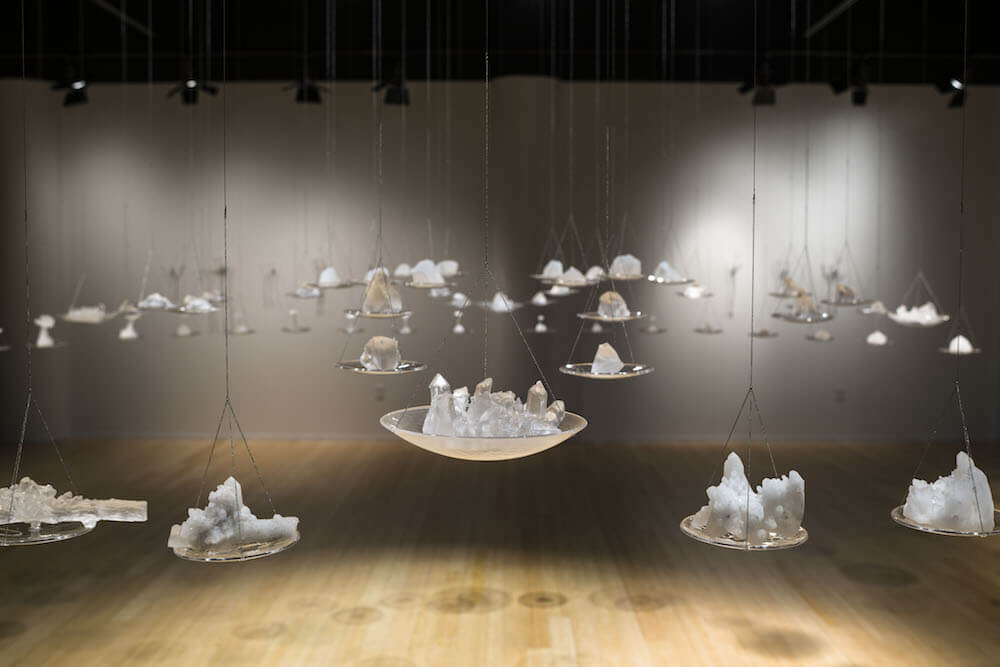
Emily Nachison’s works in cast glass and mixed media do not shy away from the seductive power of beauty. Inspired by the natural world, material processes, and a fairy-dusting of mysticism, the ethereal objects she creates seem to hover between our world and some fantastical realm just beyond it. Part of their lustrous glow comes from the use of cast glass, a material with a milky luminescence that heightens the magical associations that her favored imagery evokes. More recent works hint at an edgier side through the inclusion of brass piercing studs and leather, but in Nachison’s hands, these materials contribute a sense of pathos and yearning rather than darkness. I recently caught up with Emily to ask her about new directions in her work and life, including incorporating fragrance into her sculptures, working on a house in Joshua Tree, and collaborating with her husband, artist Michael Endo, on their curatorial project, “Dust to Dust,” which takes a non-hierarchical approach to material and method.

You and Michael met during your MFA studies at Cranbrook, and are both practicing artists. Would you mind sharing a bit about what it’s like to go through the challenging process of building a career as an artist alongside your partner who is doing the same?
Michael and I are very supportive of each other and not competitive with one another, which is key. We are similar in some ways – we both love a challenge, learning new things, and devote a lot of time to our projects. If we didn’t have that in common or respect that in one another it would be a difficult relationship to maintain. It has taken time to find a good balance and develop boundaries between projects and day-to-day life.
You two collaborate on your curatorial project, “Dust to Dust.” Are there clear roles at this point? Certain interests or perspectives that each of you tends to bring to the table that allow you to create something you couldn’t or wouldn’t have on your own?
“Dust to Dust” is a great blend of both of our strengths. Michael is an excellent curator and writer. I love engaging community, seeking out new artists, and planning events. We discuss each show and create the artist line up together. For the most part Michael writes the press releases and I plan events and handle social media. However, we organically interchange our roles depending on the show and our schedules. We also trust each other’s sensibilities and ability to get things done – so we are able to jump into either role when necessary. We do have different perspectives – I have become very interested in experiential and ephemeral media and have incorporated this into our curation in shows such as “The Way of Flowers,” which included live flowers and several aromatic workshops, and “Ice Cream Social.” Michael is interested in the meaning of mark-making, contemporary trends in painting, and developing a conversation around ecology and politics, and is bringing this into shows this summer and fall.

As a curatorial team we are both interested in critical dialogue coupled with positivity. We want to put something positive into the world and give back to our art community and neighborhood.
“Dust to Dust” shows have featured flowers, perfume, ice-cream, and bongs in combination with paintings and sculpture. Embracing materials and techniques that have sometimes been relegated to the “craft” pile is a thread that has run through all of your investigations, from fibers to glass, and now “Dust to Dust.” It’s something we used to talk about when I lived in Portland, but attitudes in the art world have changed a lot in the past 5 years or so. What do you hope to achieve by taking such a broad approach to curation with “Dust to Dust”?
I am interested in the ability of materials to reference, conjure and play with context and memory. Our hyper-interdisciplinary approach at “Dust to Dust” highlights the combination of concept with material. For example, in May we invited Jared Goodman, a Portland based “conceptual ice cream artist” to the gallery to create a vegan ice cream inspired by utopia for the “Ice Cream Social” exhibition.
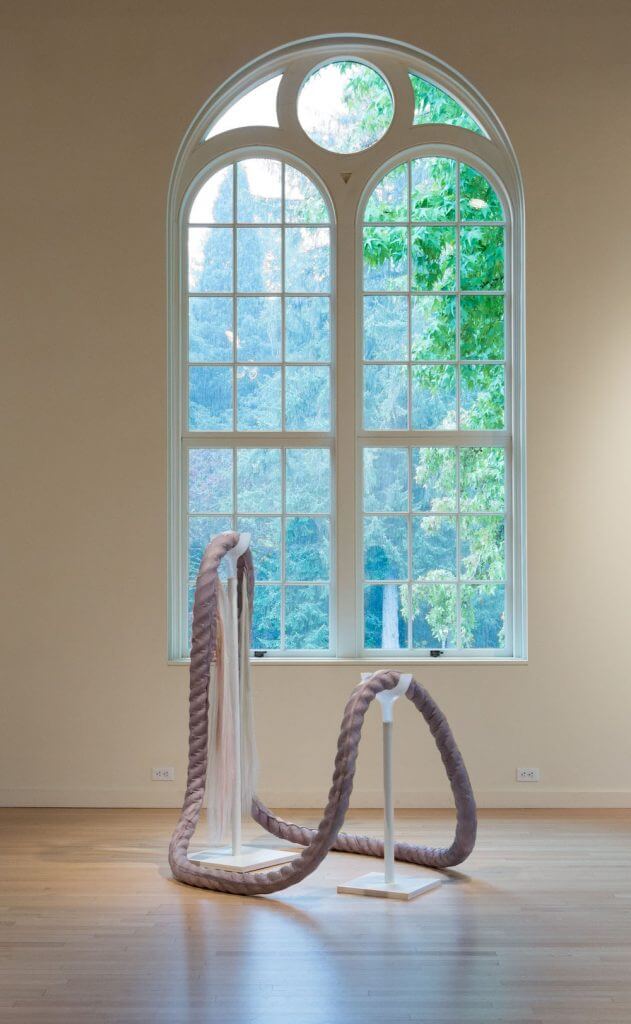
In naming “Dust to Dust” we were thinking of astrophysicist Carl Sagan’s quote:
The nitrogen in our DNA, the calcium in our teeth, the iron in our blood, the carbon in our apple pies were made in the interiors of collapsing stars. We are made of starstuff.
– Carl Sagan, Cosmos
We like the idea that we are all made of star stuff (“dust”) and so are the objects and artwork in our gallery. It comes back to material being at the forefront.

What, besides the gallery context, differentiates a “Dust to Dust” exhibition from a boutique, in which curated objects are displayed and sold?
Our shows are driven by the exploration of ideas. For example, “ The Threads of Fate” , the inaugural exhibition at “Dust to Dust,” positioned mark-making as being intimately linked to the acts of conjuring, divination, and the reimagining of events. This was highlighted through the work of Josh Bolin, Mishka Colombo, Robert Costello and Willie Wayne Smith. Four artists who, through painting and drawing, create speculative spaces for engagement with the self and the world.
“Dust to Dust” is a hybrid space due to its location. We share space with an independent record label and vintage store. I find this hybridity interesting. We get a lot of people into the gallery who wouldn’t come in otherwise – who might not feel comfortable entering a gallery space. Because it is one part record shop – it becomes a community gathering space. I like seeing these different mediums – visual art, sound, curated objects – together.
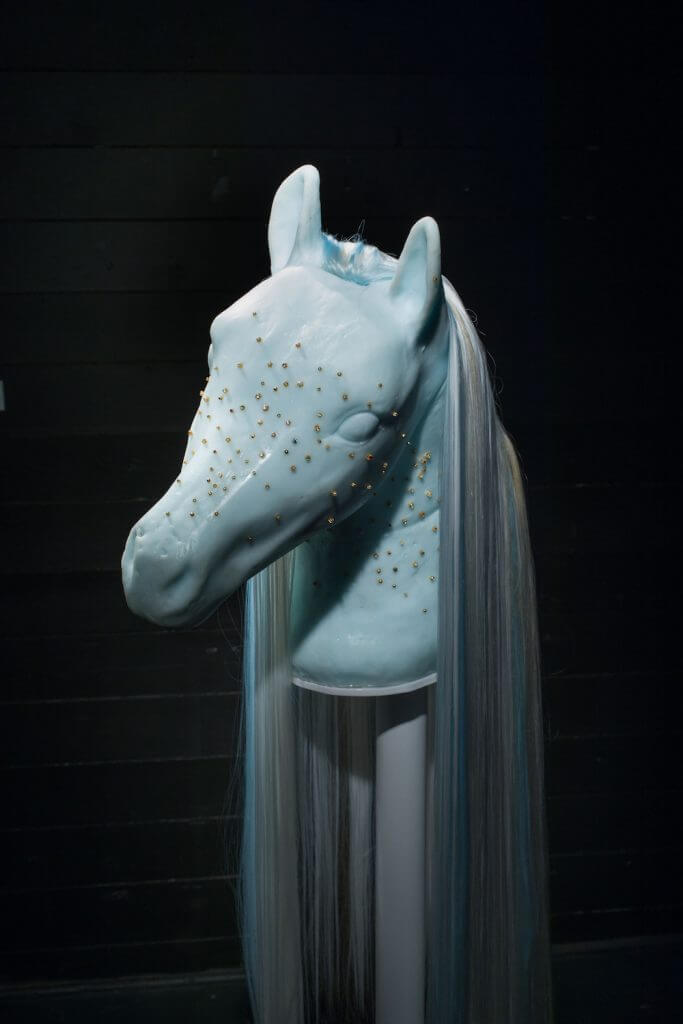
In another sort of radical direction, you’ve begun to study fragrance and apply it to your sculpture practice. I’m looking forward to seeing and smelling the work that results! How did you get interested in fragrance, and what were your first steps in learning more?
Last summer I stumbled into a perfume workshop organized by the “Institute of Art and Olfaction” at the Getty Villa in Los Angeles. This is what first sparked my interest in scents. The focus of the workshop was perfume in ancient Rome. I think this was the first time I had thought about the history of perfume and aromatics in the ancient world. The history and scope of aromatics is fascinating – it is global and extends back to human beginnings. The word perfume comes from the Latin perfumare , which means “through smoke,” referring to incense. The history of perfume is also deeply rooted in our relationship to the body and the natural world, in addition to colonization and globalization. Since this first introduction to the historical roots of perfumery I have been trying to learn everything I can through workshops, lectures and books. I had the privilege of studying with Mandy Aftel in Berkeley, CA this fall. I highly recommend her books on natural perfume for anyone interested in the topic.
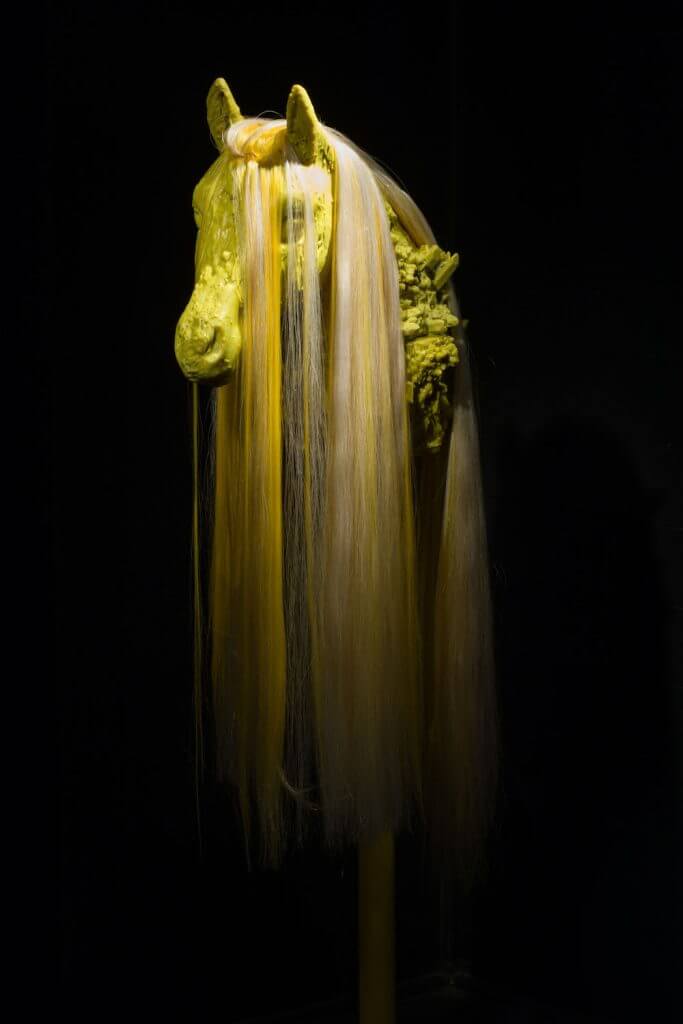
By combining aromatics with sculpture, it’s almost like you are taking the work into another dimension. How do you conceptualize the characteristics of that mode of sensation, and how do you anticipate that it will shift the way you communicate with the viewer?
Smell has become increasingly important in a world where we engage with images and sound through predominately digital means. Scent demands that the viewer be mentally and physically present in order to experience it. I am excited to develop work that asks the viewer to be present within the experience and that heightens their awareness of environment, body, and memory. I am currently working on a new series of sculptures that extract scent from plant matter and contain fragrance. This work will explore the idealized and corporeal body, and transformation.
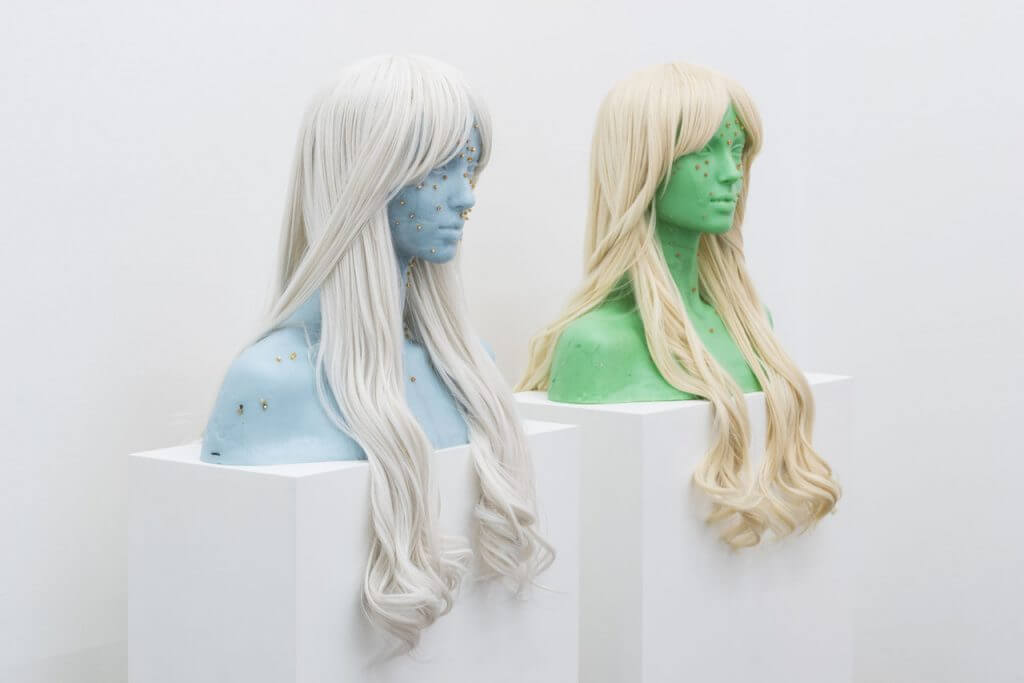
You are always moving in ambitious new directions. You’ve studied fragrance, salt collection, alchemy, and new techniques like cast glass and 3D animation. How do you approach research and learning so that you aren’t intimidated by the vastness of each of these areas of knowledge?
I usually start with an idea of how I want to use a new technique or medium and begin my research from that point. The focus is always on the concept. Also I’m a person who learns through doing. I have come to trust that if I begin something I will learn from it and new ideas with emerge.
You’ve been based in Portland, Oregon since 2010, but recently bought a house in Joshua Tree, California. What made you choose that location, and how do you think that spending time there will impact your practice?
Joshua Tree is great mix of things. It has a unique burgeoning arts scene and is close to Los Angeles, while also allowing for time and space. I’m the type of person that can hole up in the studio for weeks at a time, so the quiet of the desert works well for me. Michael and I have a few other friends who are also moving out there from Portland, and we are in the process of joining forces to build studios and possibly an education center/residency space. Also I am originally from Southern California. I miss the desert, and the proximity to the beach will allow me to get back to surfing.
Tell me about your upcoming show with Martha Mysko for Elephant in Los Angeles. How did the decision to work together come about, and what has your collaborative process been like so far?
Our exhibition is opening July 13th at “Elephant Art Space,” an independent gallery in Glassell Park, Los Angeles. The working title for the show is “Potions, Poisons, Liquid Nails”. Martha and I used to be studio-mates. Over the last eight years we have regularly discussed our studio practices with one another. This show is an opportunity for us to bring those conversations together into an experimental exhibition.
Martha is based in the Detroit area so we have been creating the work in our respective studios through correspondence. We regularly send each other images of what we are working on, make decisions together via phone and text and send image boards and collages back and forth. It has been a great way to reconnect and explore new ideas and ways of working. This past week we both started making candles and sculptures for the show using materials such as hair gel, pink Gatorade, antifreeze, sea shells and preserved roses. The show will combine our aesthetic sensibilities, and explore teen fantasy, illusion, and domestic space through digital projection and sculpture.
Martha uses found materials, as well as sculptural, digital, and painting processes for site-specific installations that complicate cultural and personal associations through formal play. Her painterly installations reference dated popular culture, domestic spaces, surrealism, and low-budget film and television sets. She combines saccharine colors with bold mark-making and raw materials. Using methods of deconstruction and reconstruction, she juxtaposes and works fluidly between the physical and the digital. You can view her work at: www.marthamysko.com, www.emilynachison.com, www.dusttodust.space





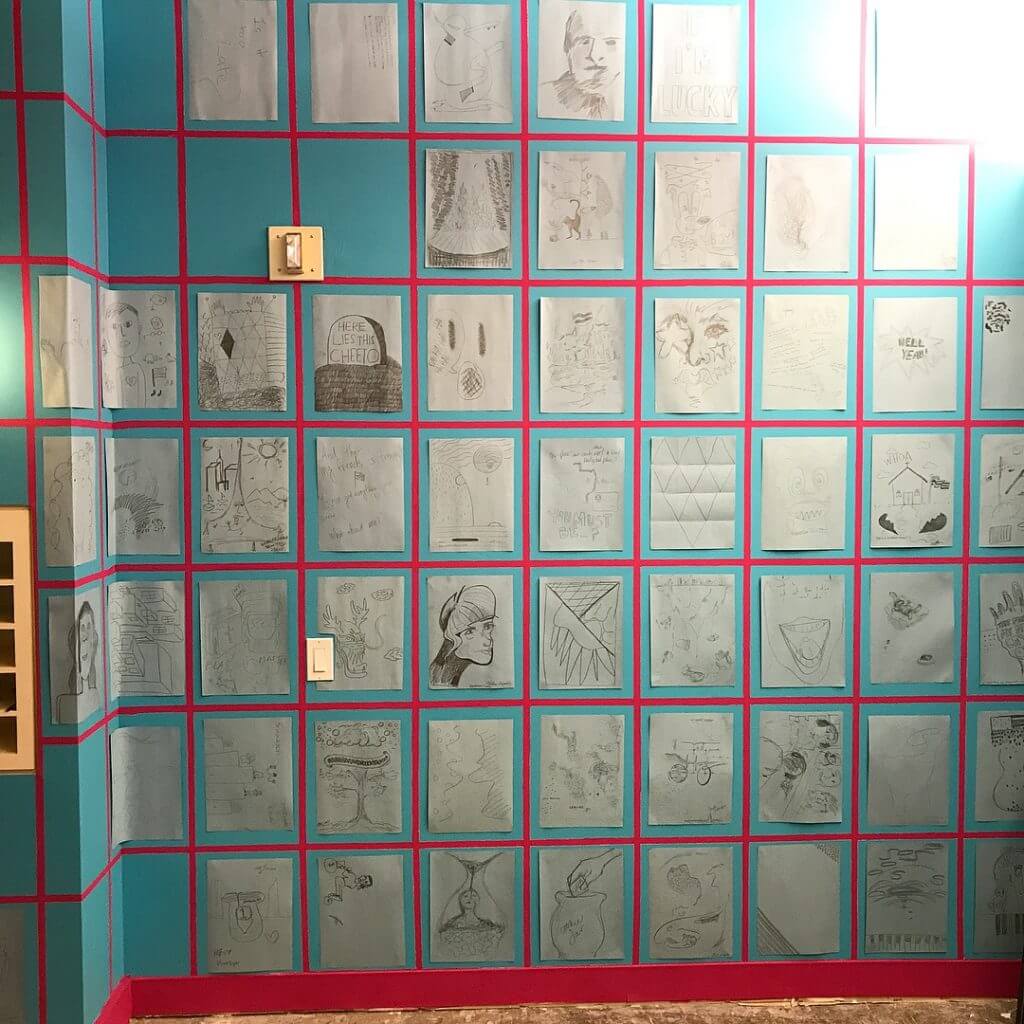


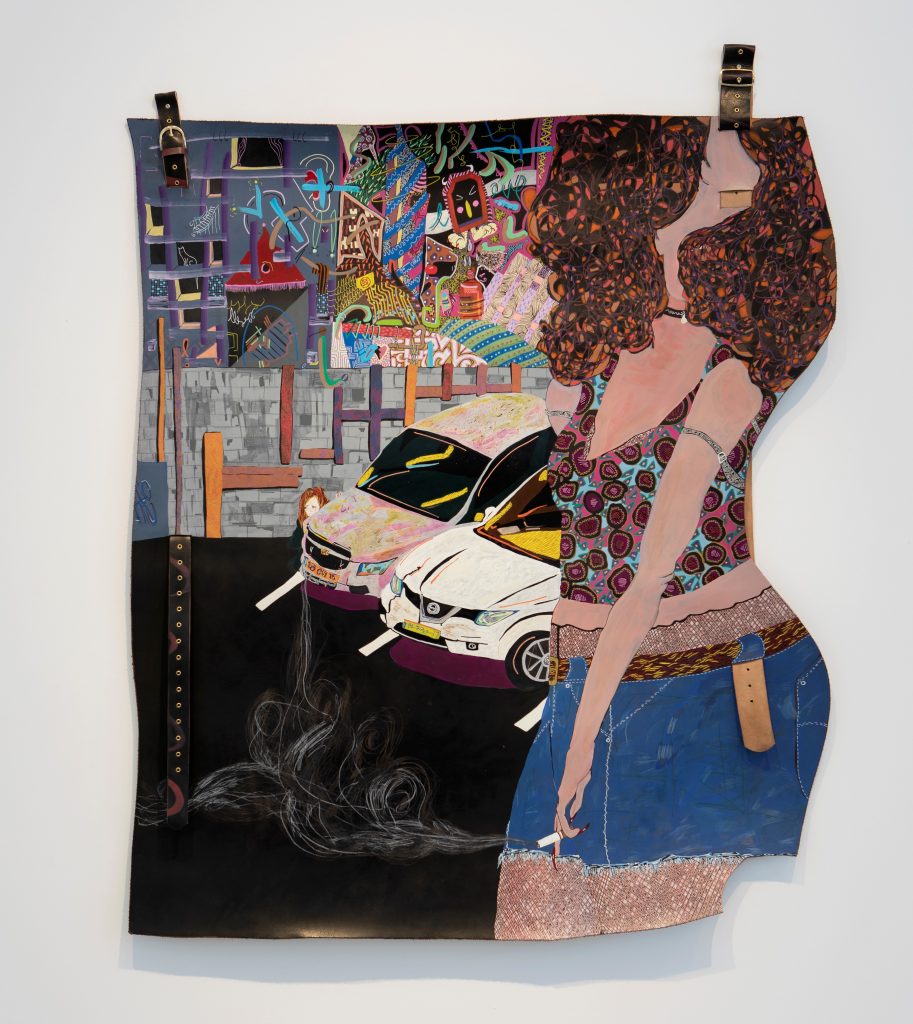
Responses